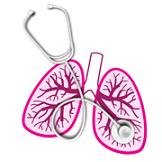Advertisment
Clear as nebulised saline!

Conflicting conclusions in 2 bronchiolitis studies is further discussed in the editorial.
Study 1: Less improvement in infants with bronchiolitis after nebulized hypertonic saline treatment
Bottom Line: Children with bronchiolitis (a common respiratory tract infection that can result in hospitalization) who were treated in the emergency department showed less clinical improvement after receiving nebulized 3 percent hypertonic saline (HS) than infants who received normal saline (NS).
Author: Todd A. Florin, M.D., M.S.C.E., of the Cincinnati Children’s Hospital, and colleagues.
Background: Nebulized HS has been shown to increase mucociliary clearance (the clearing of mucus) in healthy people and in those patients with conditions such as asthma and cystic fibrosis because it is believed to lower the viscosity of mucus secretions. Other studies have suggested HS may reduce the length of hospital stays and lessen severity in children with bronchiolitis.
How the study was conducted: The authors conducted a randomized clinical trial comparing nebulized 3 percent HS with NS in children presenting to the emergency department (ED) with acute bronchiolitis and continued distress after nasal suctioning and nebulized albuterol sulfate. The study included 62 children (from 2 to less than 24 months of age) with bronchiolitis at a single urban pediatric ED (31 children received 3 percent HS and 31 were given NS). The study was conducted from November through April in 2010 and 2011.
Results: At one hour after treatment, the HS group showed less improvement on a respiratory assessment score than children treated with NS. There were no differences in heart rate, oxygen saturation, hospitalization rate or other outcomes.
Conclusion: “Based on the results of this and other studies, the administration of a single dose of 3 percent HS in the acute care setting does not appear to be more effective than NS in improving short-term respiratory distress in bronchiolitis.”
(JAMA Pediatr. Published online May 26, 2014. doi:10.1001/jamapediatrics.2013.5306.
Available at http://media.jamanetwork.com.)
This study was supported by a Young Investigator Award from the Academic Pediatric Association.
Study 2: Giving hypertonic saline to children with bronchiolitis decreases hospital admissions
Bottom Line: Administering a 3 percent HS solution to children with bronchiolitis in the emergency department appears to decrease hospital admissions, although there were no differences in a respiratory assessment score or length of hospital stay compared to children given NS.
Author: Susan Wu, M.D., of Children’s Hospital Los Angeles, and colleagues.
Background: Bronchiolitis is responsible for about 150,000 hospitalizations each year at an estimated cost of $500 million. Standard care in the ED and inpatient settings is largely supportive with oxygenation and hydration.
How the study was conducted: The authors conducted a randomized clinical trial from March 2008 through April 2011. The study included 197 patients (younger than 24 months) who received NS and 211 who were given HS. Patients received HS or NS inhaled as many as three times in the ED.
Results: The hospital admission rate in the 3 percent HS group was 28.9 percent compared with 42.6 percent in the NS group. The average length of stay was 3.92 days for the NS group and 3.16 days for the HS group.
Conclusion: “Our study of infants and children younger than 24 months with bronchiolitis found that hypertonic saline nebulization given in the ED setting decreases rates of admission. … Further studies should investigate the optimal dosing and administration regimen and the patient-level factors that may affect response to hypertonic saline.”
(JAMA Pediatr. Published online May 26, 2014. doi:10.1001/jamapediatrics.2014.301. Available pre-embargo to the media at http://media.jamanetwork.com.)
Editor’s Note: This study was supported by a grant from the Thrasher Research Fund and by a Mentored Junior Faculty Career development Award from the Department of Pediatrics, University of Southern California Keck School of Medicine.
Editorial: Tale of two trials, disentangling contradictory evidence
In a related editorial, Sim Grewal, M.D., of the University of Alberta, Canada, and Terry P. Klassen, M.D., of the University of Manitoba, Canada, write: “For pediatricians looking for answers on how best to provide treatment for their patients, nothing can be more frustrating than two randomized clinical trials (RCTs) with contradictory results.”
“So, back to these two RCTs: how is it possible for two studies like these to arrive at such differing conclusions? It is possible that chance alone could account for this. There is always some degree of fluctuation in estimates derived from trials, and the smaller the studies, the greater will be the fluctuation. As the sample size grows, the estimates become more stable and there is less fluctuation,” they note.
“Evaluating the efficacy of hypertonic saline in the treatment of bronchiolitis is not an easy task. As seen in these two RCTs, as well as in other studies to date, the optimal concentration, dosing frequency, and duration of therapy of hypertonic saline still need to be determined,” they continue.
“From our read of the current systematic review (which now will need to be updated) and our read of these two individual trials, we would not start using hypertonic saline in the emergency department on a routine basis. However, nebulized hypertonic saline may have a role to play for children hospitalized with bronchiolitis,” they conclude.
(JAMA Pediatr. Published online May 26, 2014. doi:10.1001/jamapediatrics.2014.423.
Available at http://media.jamanetwork.com.)
Contact: Jim Feuer
jim.feuer@cchmc.org





